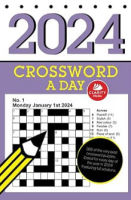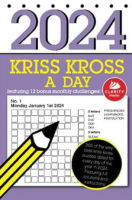Solving Hard Futoshiki Puzzles
This article discusses 5 x 5 sized futoshiki which is the most commonly seen size of this puzzle type. However, the strategies can be applied to larger puzzle sizes by simply adjusting the numbers.The first thing to say is that a good futoshiki puzzle should be solvable through the use of logic alone, and you should not need to guess. And of course it should have a unique solution.
Taking that as given, then what strategies can you use to solve a futoshiki puzzle that is hard?
Even with a hard puzzle, a large amount of the solving will be done by simply noting where a number can or cannot go in a region, and placing values accordingly: if there is only one square in a row that can contain 5, it must go there.
In terms of rules you may need to use when solving harder puzzles, these tend to either involve the inequalities and the implication of the inequalities, or simply require the application of set rules similar to sudoku.
On the latter point, if you have '35' as the pencilmark options for one square, and also '35' for a second square in the same region (= row or column) then you can eliminate 3 and 5 from the other squares in that region.
Sometimes with hard futoshiki you might need to use subsets. For instance, if you have this as the pencilmarks for the five cells in a region:
12345, 245, 1345, 24, 25
...we can see that the 1 and 3 only occur in the first and third cells, and therefore these cells must be 1, 3 so we can remove 2, 4, 5 from them to get:
13, 245, 13, 24, 25.
In this particular instance you could also have reasoned that the 245, 24, 25 in squares two, four, five form a set and therefore these cells must contain those numbers in some order, again allowing you to eliminate those values from squares one and three.
With regard to the inequalities, then here is one piece of logic you may already use when solving the puzzles but it is useful to mention as it may not be immediately obvious: if you have a region in which one square is greater than the two other cells in that region, e.g.:
< cell >
then you know that the value of the cell must be at least 3, because it is greater than two other cells in the same region, whose lowest possible values are 1 and 2 in some order, and since this square is greater than both, it must be at least 3. Similarly, if the value of a cell (individual square) is indicated as less than its two neighbouring cells in the same region, then the highest value it can be is 3. Of course all three cells must be in the same region for this piece of logic to be applied.
Are there any other tactics or strategies you have found helpful whilst solving harder futoshiki puzzles? If so, then please do mention them in the comments section below!
Date written: 25 Nov 2010
Category: futoshiki | Keywords: strategy | solving
Comments:
Your last trick < > may be put in a more general way. say ac where a,b,c, are pencilmarks then we may combine a,c and eliminate the 2 lowest options, allow only options above these lowest 2 for bBy: David Dirkse - 21 May 2015 19:00:28
I often use what are called X Wings in Sudoku to help solve extremely difficult Futoshikis. They work as follows: If 2 rows contain a number in the same 2 columns and only the same 2 columns, then that number can be removed from the other cells of the 2 rows. Similarly, if 2 columns contain a number in the same 2 rows and only the same 2 rows, then that number can be removed from the other cells of the 2 columns.
By: Don Gravelle - 26 Oct 2020 15:01:19
Puzzle Videos: Learn to Solve
General Knowledge Quiz 2
This is our second general knowledge quiz. It's time to see how good your general knowledge is! We hope you enjoy having a go and seeing what score you'll get!
Read about other Puzzles
- The i Book of Puzzles
- Puzzle Videos and Tutorials
- Free Outside Sudoku Puzzle
- Buy Puzzle Books
- Sudoku and Symmetry
Comment on this blog post
If you would like to comment on this post, please enter your comments below; all fields are mandatory. Posts are moderated before display.
Back to World of Puzzles



